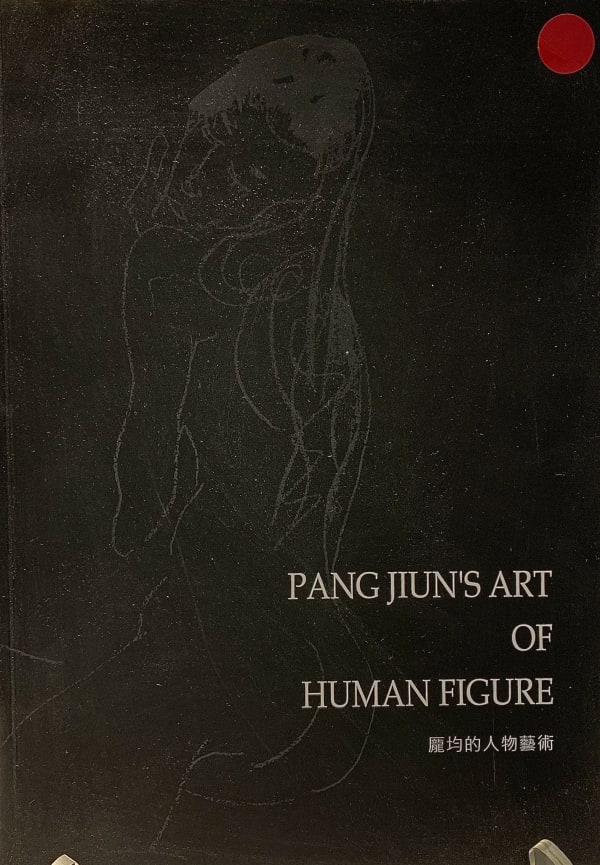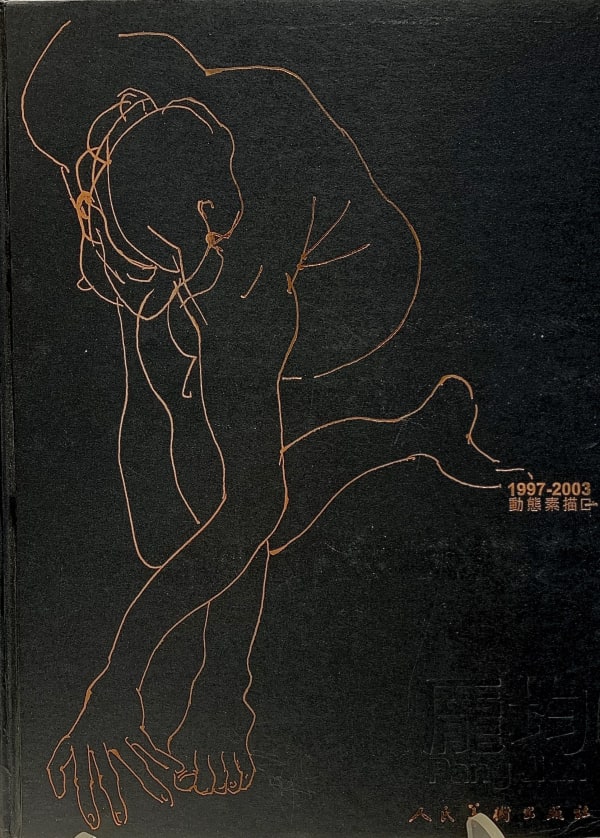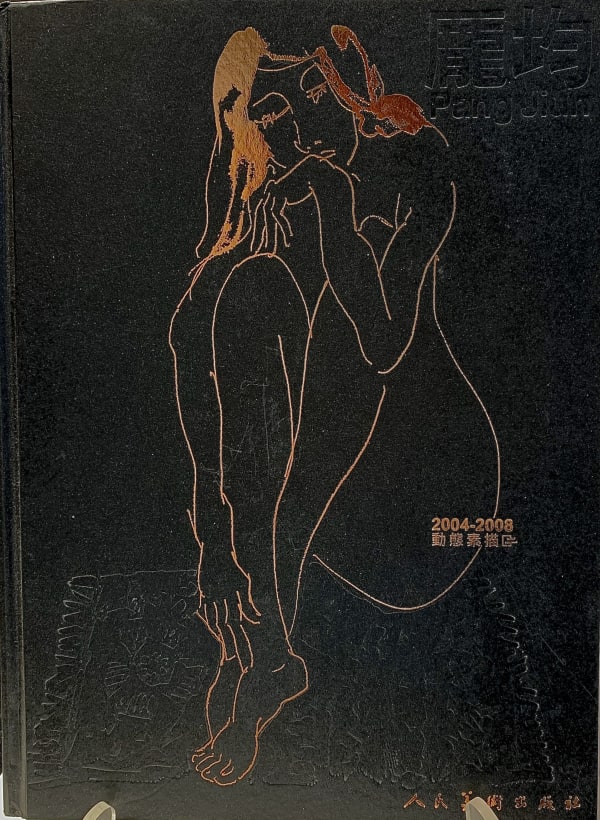Pang Jiun 龎均 Taiwan, b. 1936
When drawing pictures, Chinese people combine the life of the hand and brush. That’s what I’m doing when I create a dense, layered oil painting.
-- Pang Jiun
中國人在畫圖的時候,是將手與筆的生命結合在一起的, 所以我在畫油畫時的濃厚堆砌,也是在做這種努力。
--龎均
Born in 1936, Pang Jiun studied at the Central Academy of Fine Art where he developed his artistic skills and techniques into a quintessential oriental Expressionist style. The artist is best known for fusing Western oil painting techniques which he adopted from his travels to France, with implicit imagery of Eastern philosophy. Furthermore, he has dedicated much of his work in the exploration of landscape and nature. Through Pang Jiun’s paintings, viewers are invited to experience his unique artistic language of rhythmic vitality and charm.
龎均生於上海的藝術世家,父親是曾留學巴黎的藝術院院長,母親則是曾留學東京的油畫家,十一歲便跟姐姐舉辦聯展。龎均十三歲便考入杭州美院,後來轉讀中央美術學院,十八歲以優異成績畢業。龎均融匯中西方的藝術哲學,他的畫作既能表現西方印象派及野獸派的爆發力,亦藴涵東方文人畫的詩情畫意,成功建立了東方油畫的表現主義。龎均自1987年起便定居台灣,並任教於國立台灣藝術大學逾二十年,桃李滿門。龎均對華人藝術界貢獻良多,有著舉足輕重的地位。1994年被納入《中國當代藝術界名人錄》,次年並列入《英國劍橋世界名人錄》,作品廣為海內外美術館及私人珍藏。
中國美術館,北京,中國
中央美術學院,北京,中國
國立台灣藝術大學,新北市,台灣
國立國父紀念館,台北,台灣
墨西哥博物館,三藩市,美國
「龎均個人油畫展」,龍門畫廊,台北,台灣,1987年
「龎均二十一世紀油畫首展」,華藝藝術中心,台北,台灣,2001年
「龎均的藝術」,國立國父紀念館,台北,台灣,2003年
「龎均70」,金德瑞藝術中心,北京,中國,2006年
「走過台藝大二十年──龎均的色、線、形個展」,台灣藝術大學展演中心,新北市,台灣,2007年
「龎均的油畫藝術」,中國美術館,北京,中國;國立歷史博物館,台北,台灣,2008-2009年
「東方文明─龎均個展」,聖瑪莉亞聖殤學院,威尼斯,義大利,2015年
「東方表現的龎均」,上野之森美術館,東京,日本,2015年
「東方文明:臺北會後展 & 龎均‧水鄉印象:威尼斯新作展」,台北世貿一館,台北,台灣,2015年
「春雷始鳴收藏展」,台北日升月鴻畫廊,台北,台灣,2016年
「盛夏光景──夏季聯展」,台北日升月鴻畫廊,台北,台灣,2016年
「龎均:人體素描藝術」,香港會議展覽中心,香港,中國,2016年
「龎均八十「懷舊」大作發表展」,台北世貿一館,台北,台灣,2016年
「沙龍沙龍:1972-1982年以北京為視角的現代美術實踐側影展」,北京中間美術館,北京,中國,2017年
「龎均──甲天下之美 」,廈門市國際會議中心C3館,廈門,中國,2017年
「龎均的藝術」,廈門中華兒女美術館,廈門,中國,2017年
「藝術廈門博覽會──臺北會後展 龎均──甲天下之美」,台北日升月鴻畫廊,台北,台灣,2017年
「臺北國際藝術博覽會──探索永恆、面向未來」,台北世貿一館,台北,台灣,2017年。
「有限與無限──紀念王翬誕辰385周年全國名家邀請展」,常熟美術館,江蘇,中國,2018年
「六十年的約定──龎均油畫展」,香港中環交易廣場中央大廳,香港,中國,2018年
「灰調與色彩之約──龎氏家族收藏展」,台北世貿一館,台北,台灣,2018年
「龎均:一九新作展」,香港壹畫廊,香港,中國,2019年
-

Pang Jiun's Art of Human Figure 龎均的人物藝術
Pang Jiun, 2014 Read more -

Pang Jiun: Expression of the Orient 東方表現的龎均
Pang Jiun, 2015 Read more -

The Art of Pang Jiun 1997 - 2003 龐均動態素描 1997-2003
Pang Jiun, 2008 Read more -

The Art of Pang Jiun 2004 - 2008 龐均動態素描 2004-2008
Pang Jiun, 2008 Read more -

The Journey of a Promise - Oil Paintings by Pang Jiun 六十年的約定 - 龎均油畫展
Pang Jiun 龎均, 2018 Read more
Pang Jiun was born a year before the Marco Polo Bridge Incident*, and has now been painting for over 70 years. He is a painter who has matured over time. His works generate a deep impact, and his creative spirit is enthralling. Viewers can experience the artist’s passion by visiting the new exhibition at Yan Gallery, which showcases his very latest works.
In 2018, Pang Jiun created Hong Kong, Hong Kong, which is now in the collection of China Evergrande Group.
In the same year, Hongkong Land, a British–owned company, hosted a large solo exhibition for the artist in Exchange Square, Hong Kong, and The Hong Kong Museum of Art acquired two works from this show. Afterwards, Pang Jiun traveled from Hong Kong to the region south of the Yangtze River, and created over ten works ranging in size from 60 x 73cm to 73 x 91cm. In the spring of 2019, a large-scale artwork, A Thousand Sails On The Spring Tide (200 x 750cm) by Pang Jiun is going to be auctioned by Sotheby's in their Modern Art Evening Sale.
When we visited Pang Jiun in his Taipei Studio in 2019, we witnessed how he created an incredible 16-meter-long artwork using vast amounts of paint. The painter used over a hundred tubes of Rembrandt Paint to create a complex texture to his canvas: some lines are quite light, while others are thick and heavy. This is how the painter expresses his passion whilst listening to a Mahler symphony. Similar to the thick layers of paint used by Van Gogh to express his emotions, this Chinese painter employs a similar method.
In over ten works (each 97x130cm) by Pang Jiun now on display at Yan Gallery, the painter demonstrates his swift and agile brush work. Pang Jiun paints from the heart. Ideas on art that he has developed over a lifetime are expressed through techniques he has been practicing throughout his life. What a joy to witness!
“I am an oil painter, and will only ever paint in oils. What I aspire to do is to recreate the atmosphere and spirit of traditional Chinese art through the medium of oil on canvas”, says Pang Jiun.
Western artists such as Van Gogh, Gauguin, Matisse and Picasso embraced and incorporated the oriental spirit into their art. In Puccini’s Opera, Chinese folk songs are reworked into magnificent melodies. In the history of Chinese art, pioneer artists educated in France (including Pang Xunqin, the father of Pang Jiun) have greatly contributed to the merging of Eastern and Western art techniques. Yet Pang Jiun’s ideas and methods have evolved into his own unique style.
Reverting back to the artworks - in this exhibition Pang Jiun has recorded both the view from his hotel room, while staying at the Mandarin Oriental in Hong Kong and also the view outside the window of his own house and has captured them onto canvas; they are evocative of Matisse’s style, yet the colours are more vibrant and the subject matter more humourous. Matisse incorporated an Eastern style into his linework borrowing from Chinese art and the murals of Dunhuang, dividing up the flat surface of his canvases and creating his own unique style, which was innovative at the time. Pang Jiun’s linework is heavily influenced by Chinese calligraphy. His lines flow in different directions and are of varying thickness: strong ones resemble bones, while thin ones resemble human hair. The lines are used by Pang Jiun to express his emotions and are open to interpretation by viewers.
The use of ink in Pang Jiun’s new artworks is as surprising as his linework. There can be up to 5 varying shades of ink, which range from the subtle to the intense. In the artwork The Lotus, the painter has developed a unique way of incorporating ink into an oil painting.
Viewing The Lotus together with Blooming Flowers, one is deeply impressed by Pang Jiun’s agility to shift between usage of colour: the gentleness expressed through an oriental-style of colour, and the exuberance highlighted by western-style colour.
In terms of subject matter, there are flowers, birds, fish, insects and garden views in the new artworks. At the same time, there are artworks featuring vast landscapes such as of Central, Hong Kong or of Gu Langyu Island. Such a broad range of subject matter is rarely seen in traditional Chinese painting.
While writing this article, I heard the news of the plagiarism scandal regarding Ye Yongqing. Painters sometimes absorb visual symbols, then they start to produce artworks using these “techniques”. This is disrespectful to viewers. If the viewer cannot feel the efforts and emotions of the painter, then they cannot really appreciate the works. In the Chinese art industry today, painters as diligent and creative as Pang Jiun are rare to find. We respect the artists’ efforts, and should always respect the efforts of people who invest in exploration and creation.
Fong Yuk Yan
Spring 2019
* In 1937, a minor clash between Japanese and Chinese forces led to the beginning of the second Sino Japanese war (1937-1945).
